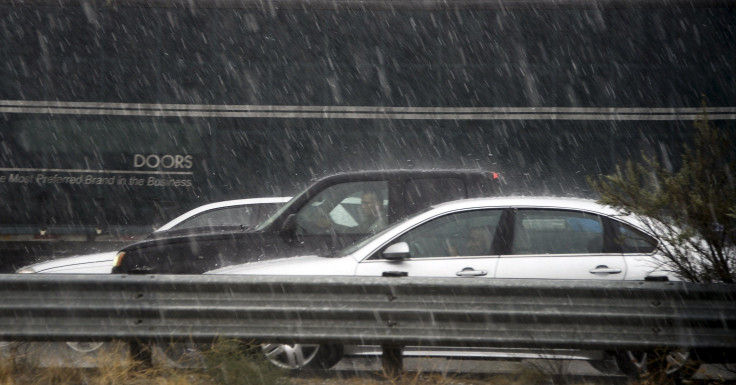How Often Does It Rain In California? Los Angeles Christmas Eve Storm To Bring Wet Travel Weather Amid State's Drought

Christmas travel could become tricky in southern California as the second wet weather pattern in just a few days is expected to hit Friday. Los Angeles International Airport reported flight delays Wednesday as rain battered the region and another storm led by a cold front was following closely behind, bringing with it more heavy rain and high winds. Residents have been warned that areas recently burned by wildfires could be more susceptible to landslides and mud flow when the rain hits sloped landscapes.
“Moderate to heavy rainfall Friday night into early Saturday will bring a risk of urban roadway flooding, and mud and debris flows within recent burn areas,” said the National Weather Service. “The cold storm will bring the potential for rapidly lowering snow levels, with gusty winds and showers likely to persist through Saturday afternoon.”
Southern Californians often brag about the region’s lack of rain, a claim that is mostly true. Los Angeles County has seen below average rainfall for the past several years. From 2015 to 2016, LA accumulated a total of only 9.65 inches of rain, 5.12 inches below a 138-year average. The last time the City of Angels saw above average rainfall was during the period from 2010 to 2011 when totals reached 5.23 inches above average. According to the data gathered so far this year, Los Angeles has seen rainfall about .59 inches below normal.
Los Angeles could see over an inch of rain later this week as a major storm hits California. https://t.co/cvhR5MCzfN pic.twitter.com/UuGanJQawS
— Breaking Weather by AccuWeather (@breakingweather) December 13, 2016
The arrival of the weather pattern known La Nina in November, which brings higher temperatures, meant southern California expected to see even lower levels of precipitation through March, exacerbating the state’s severe drought. December’s storms, however, could change that outlook.
“Even before December’s precipitation, California’s 154 reservoirs held 18.5 million acre-feet of water by November 30, an improvement of nearly 7.6 million acre-feet from a year ago,” the U.S. Drought Monitor forecast said. “The end-of-November statewide storage was 88% of the historic average (for this time of year) of 21.1 million acre-feet.”
© Copyright IBTimes 2025. All rights reserved.






















